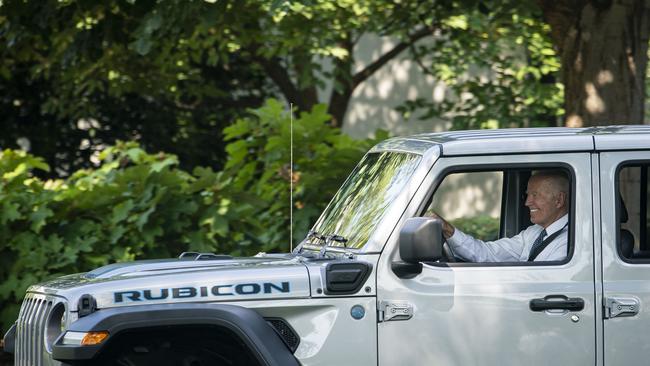Biden unveils plan to phase out most petrol cars by 2032
Electric cars will make up 56 per cent of all new vehicle sales under new regulations, the administration hopes.

The White House has announced plans to phase out the majority of petrol-powered cars by 2032, causing a political row over the future of the American car industry.
In a concession to manufacturers, however, the proposals water down previous ambitions to accelerate the shift towards cleaner vehicles.
Carmakers, whose union-organised workforce is being keenly fought over by both candidates in November’s presidential election, made a record 1.2 million electric vehicles last year. Cleaner vehicles made up just 7.6 per cent of total car sales in the US, well below the 56 per cent target under the new regulations.
The original proposals were made envisaging that electric cars and trucks would make up as much as 67 per cent of new vehicle sales by 2032.
“I brought together American autoworkers,” President Joe Biden said in a statement. “Together, we’ve made historic progress.”
The administration heralded the move towards electric vehicles as “the strongest ever” and warned that all its work would be undone by Donald Trump’s return to the White House. Mr Trump has consistently argued that the switch from petrol will harm the economy and hand a competitive advantage to rivals such as China. “Crooked Joe Biden’s insane and radical EV mandates will ban your gasoline-powered vehicles and force you to buy expensive and unreliable electric vehicles,” Mr Trump’s campaign team posted on social media.
“President Trump will always protect your freedom to drive what you want!”
Mr Biden promised substantive action on climate change during the 2020 presidential election campaign.
The rules set ambitious emission reductions for 2032 but are less stringent than preliminary targets laid out in April last year after carmakers criticised the pace of change.
They had attacked the initial standards as overly burdensome, with many pointing out that they have invested billions in transforming plants to make electric vehicles. They also argued that electric vehicles are so far unpopular with consumers and the infrastructure needed to keep them on the road, such as charging points, has not kept pace with the government’s ambitions.
The Biden administration responded by allowing manufacturers a “variety of pathways” to reaching the new standards.
Part of the compromise included allowing carmakers to include production of electric cars along with conventional, but more fuel-efficient, vehicles, and more plug-in hybrids. Officials have also softened year-to-year emissions targets for the three years to 2030, while maintaining the same ones for 2032.
Moderating the targets in these first three years “was the right call”, said John Bozzella, president of the Alliance for Automotive Innovation, a Washington lobby group representing carmakers.
“These adjusted (electric vehicle) targets – still a stretch goal – should give the market and supply chains a chance to catch up,” he said.
THE TIMES



To join the conversation, please log in. Don't have an account? Register
Join the conversation, you are commenting as Logout